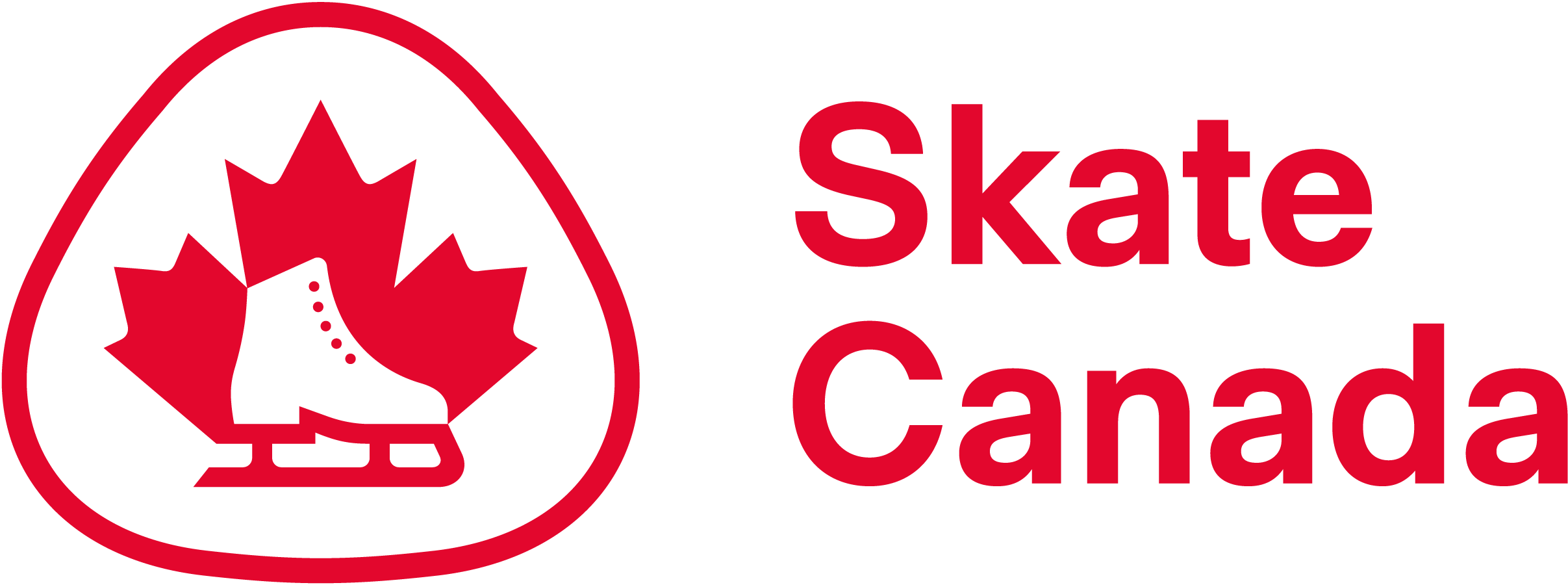Ice Etiquette for STAR Skaters
Ice Etiquette
The following "Right of Way" order is to ensure safety for all skaters on the ice and is in effect during all Club sessions.
- 1st priority: Skater in the jumping harness
- 2nd priority: Skater being coach assessed
- 3rd priority: Skater wear the belt - their solo or dance music is being played
- 4th priority: Skater in a lesson
- 5th priority: Coaches
The "right of way" goes first to the skater in a harness, then to the skater who is being coach assessed, then to the skater wearing the belt (whose music is playing solo or dance), then to the skaters in a lesson. The skater performing the program must also keep an alert eye open. Note that there are usually multiple lessons at the same time. Other skaters must avoid undue interference with the skaters who have the "right of way". Skaters having the "right of way" must also remember to keep an alert eye open to avoid collisions and may respectfully remind others of "right of way" i.e.: two skaters in a lesson.
It is common etiquette to make extra effort to stay out-of-the-way of priority skaters, however, you do not have to stop skating and stand at the boards.
All skaters who accidentally run into each other or cut each other off are encouraged to say, “I’m sorry” or excuse themselves in a polite manner (screaming "Excuse Me!" is unacceptable), even if it appears that the other person is more at fault. It shows graciousness, maturity and respect - qualities that bring out the best in all of us.
It is important to be aware, cautious and considerate of other skaters. We have many different levels of skaters that share the same ice.
Ice Usage and Skater Behaviour
- Keep moving! - If you feel the need to stop and talk to another skater, you must move next to the boards.
- Look where you are going always! - Skaters are responsible for looking in the direction they are skating.
- Spin in the center! - Spins should be practiced in the center of the rink.
- Do not linger in the jumping lanes! - Most jumping is done at the ends of the rink.
- Skaters will use the sides of the rink to gain speed for jumps.
- Prolonged sitting on the ice after falling is prohibited!
- Kicking or digging at the ice with skate blades is prohibited!
- Avoid skating in the Lutz corners of the rink for prolonged periods as this impedes other skaters' ability to perform their elements and programs.
- If you must carry on an extended conversation (socializing) - get off the ice. Such an activity on the ice wastes expensive ice time and interferes with other skaters' training while presenting a stationary hazard for skaters to avoid.
- Eating, chewing gum or drinking (except for drinking water from plastic bottles) is not permitted on the ice.
- Solo music will be played using an established system to insure fairness; however, a priority would be given to a coach's request for a lesson.
- Skaters are to leave the ice promptly at the end of the session.
Dangerous Singles Moves
When you are practicing elements like camel spins and back spirals be especially aware of the danger your exposed blade poses to other skaters. Recognize that once you've started the element it will be hard for you to see those around you. Take a good look at your expected "space" before you start the element, and abort it if it looks like you could cause a problem. Other skaters are expected to give the skater free maneuvering room once performing such an element.
Rink Corners attract skaters performing "Lutz" jumps
Because of the nature of the Lutz jump, it is most commonly performed in opposite corners of the rink. These corners are informally called the "Lutz Corners". Strive to avoid long-term practice activities in these corners, and be especially aware of your surroundings when you are in them. The approach to a Lutz is long and blind. The skater doing the Lutz is not likely to see you.
Falls and Injuries
When you fall, get up quickly. Other skaters will have a much harder time seeing you when you are down low on the ice. Don't stay there any longer than you have to. While falling, keep your fingers away from your blades. Learn to fall properly so that you can protect your head as much as possible. Learn to keep "loose" when you fall and this will help you to avoid breaking things.
If you see someone else that has fallen and may be injured, don't just drag them off without being certain that doing so won't hurt them further. If you suspect that someone is seriously hurt, the best thing to do is:
- Have someone stand "guard" over them to make sure that other skaters avoid collisions with them,
- Get a qualified coach/adult to come and help them.

